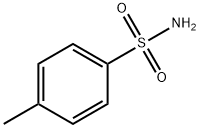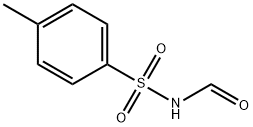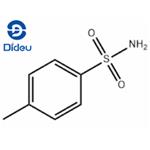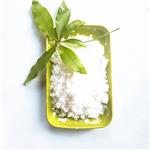Role and purpose
P-toluene sulfonamide is a kind of excellent solid plasticizer used for thermoset plastic. It is suitable for being applied to phenolic resin, melamine resin, urea-formaldehyde resins and polyamide resins. Combination with a small amount can improve workability and make the solidification be uniform, and thus endowing the products with a good gloss. However, P-toluene sulfonamide has no softening effect as the liquid plasticizer, and is incompatible with polyvinyl chloride and vinyl chloride copolymer and is partially compatible with cellulose acetate, cellulose acetate butyrate and cellulose nitrate.
p-Toluene sulfonamide has a low toxicity. It has been approved by the US Food and Drug Administration for being applied into adhesives as food packaging materials.
p-Toluene sulfonamide is briefly called TSH and is commonly used for nickel plating. It can improve the coating structure by the adsorption on the electrode so that it has some degree of surface glossing effect; it is generally not strictly limited for the added amount of brighteners lax; moreover it also has very light effects on the coating characteristics. However, it can only give semi-bright coatings, and the surface gloss is related to the polishing quality of the matrix before plating.
Currently, the brightener agents of nickel plating used is mostly some kinds of organic compounds. And the used amount of these organic compound, although are very little, but with a significant effect. In addition to brightening the coating, it can also largely determine the mechanical properties and chemical properties of the coating. But it must be realized that, since the bright nickel plating solution has been added to the organic brightener, it naturally makes the nickel plating layer contain a relative big amount of organic sulfur and other impurities, thus inevitably enlarging the internal stress, so its mechanical properties is a bitter lower than the conventional nickel-plate, and is prone to crack layer when the plating gets stress; its antirust ability is also worse than the dark nickel. Thus, a single layer of bright nickel is unable to improve the corrosion resistance and mechanical properties of the nickel layer; it must need to form a bi-layer and multilayer nickel or chromium to form a multilayer combination of decorative protective coatings.
When toluene sulfonamide is heated to 105 °C, it will be decomposed and there will be nitrogen released (gas evolution 130 mL/g); p-toluene sulfonamide foaming agents can give a fine foaming with small product shrinkage. It also has a high tear strength and good stability. Thereby, it has a wide range of applications.
The above information is edited by the chemicalbook of Dai xiongfeng.
Uses
1. It is used in the manufacture of dyes, synthetic resins, paints, disinfectants and wood processing brightener.
2. It is used for the manufacture of plasticizers, disinfectants; it can also be used for the production of synthetic resins, paints, and fluorescent dyes.
3. It can be used as primary brightener in the bright nickel plating. It is sued for bright nickel plating for multilayer to obtain uniform bright coating. It has a commonly used amount of 0.2~0.3 g/L.
4. It can be used as plasticizers, also used for synthesis of organics, resins and saccharin.
Production methods
It is obtained by the reaction between toluenesulfonyl chloride and ammonia.
First, add part of HN3 water into the reaction pot, stirring for adding p-toluenesulfonyl chloride with the temperature rising naturally to above 50 °C; after the temperature has dropped, add the remaining ammonia and have reaction for 0.5 h at 85~90 °C. Stop the reaction when the pH reaches 8 to 9. Cool to 20 °C, filter, and wash the filter cake with water to obtain the crude. Then further go through bleaching via activated carbon, alkali dissolution, acid precipitation, rejection filter, drying to get products.
Chemical Properties
White leaflets. Soluble in
alcohol; very slightly soluble inwater.Combustible.
Uses
p-Toluenesulfonamide was used to prepare the precursor required for synthesis of ethyl 6-phenyl-1-tosyl-1,2,5,6-tetrahydropyridine-3-carboxylate.
Uses
Used in the manufacture of plasticizer, disinfectant, fungicide, fungicides, wood brightener. Also can be used in the production of synthetic resin, the coating, the fluorescent dye, pharmaceutical, etc.
Uses
4-Tolylsulfonamide is a carbonic anhydrase inhibitor used the synthesis of antiglaucoma and anticancer drugs.
Definition
ChEBI: A sulfonamide that is benzenesulfonamide bearing a methyl group at position 4.
General Description
p-Toluenesulfonamide undergoes FeCl
3-catalyzed direct substitution reaction with benzylic and allylic alcohols.It is employed as nucleophile in tetrabutylammonium fluoride (TBAF) catalyzed vinyl aziridine opening reaction.
Purification Methods
Crystallise the amide from hot water, then from EtOH or Et2O/pet ether. [Beilstein 11 H 104, 11 IV 376.]





